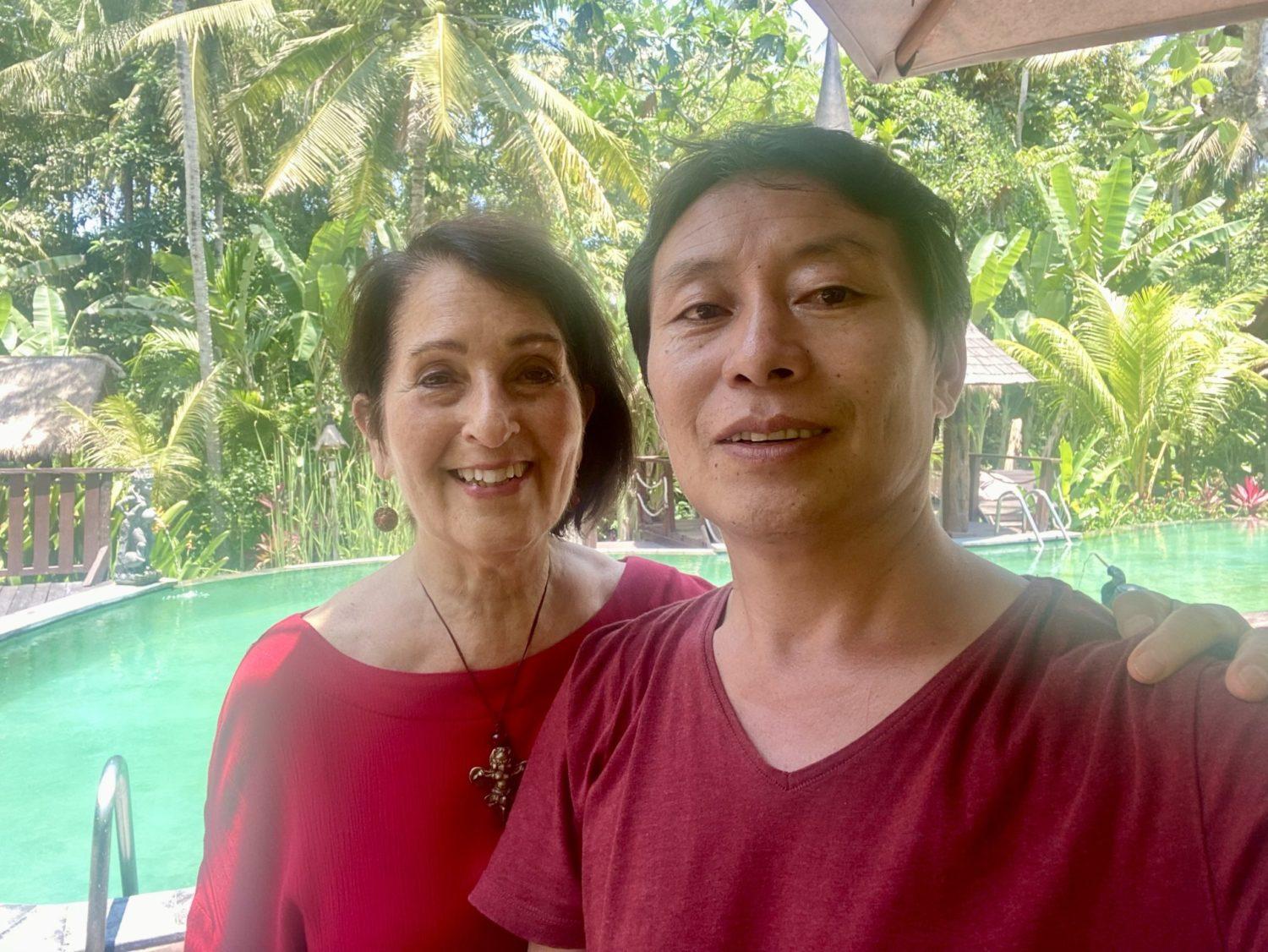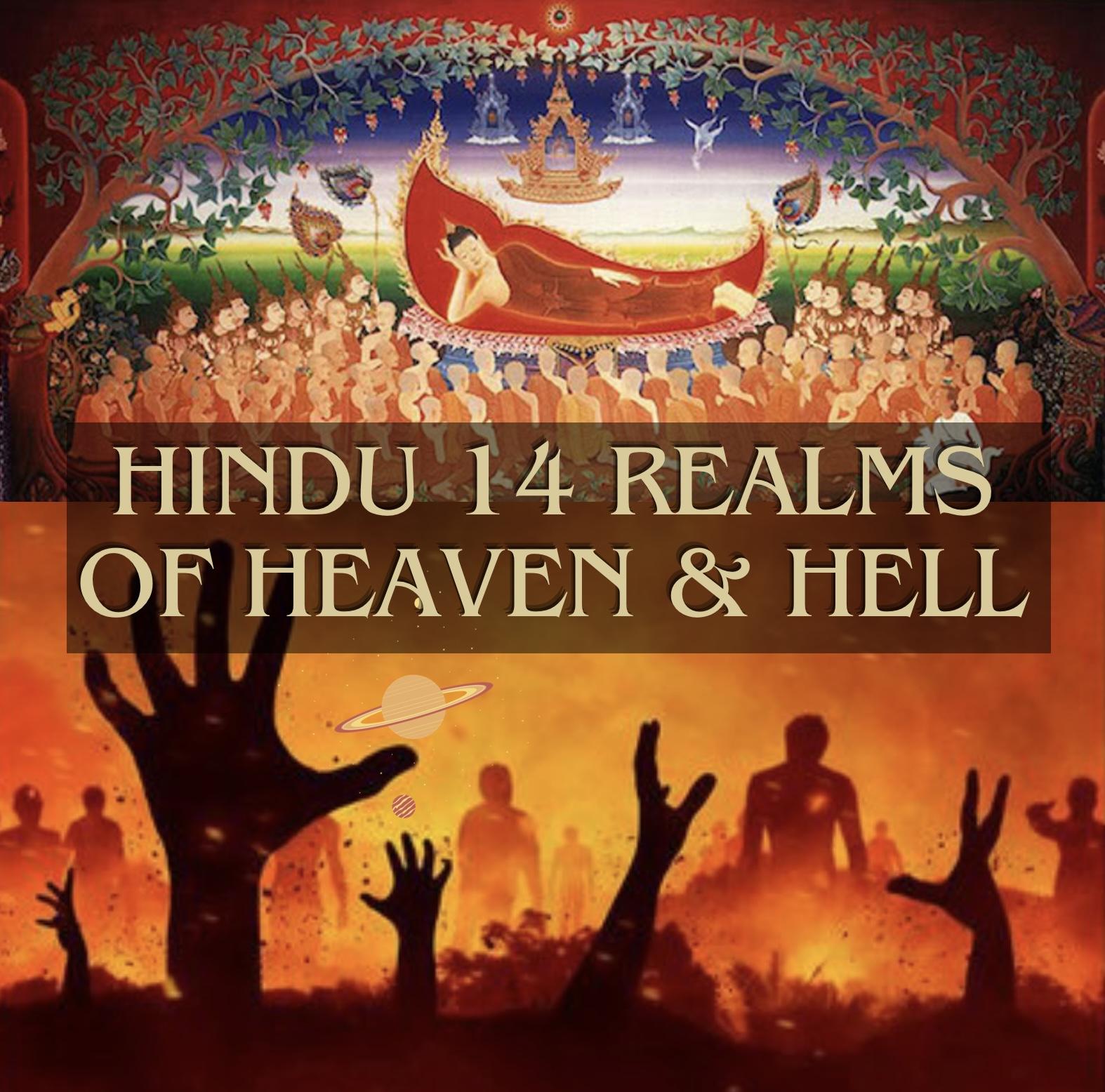
Our modern world is a reflection and repeat of ancient cycles that’s beyond Biblical. Hindu myths also come alive like a déjà vu of something we’ve already experienced before.
The path to Ascension is described in ancient Vedic texts that traverse seven levels of Heaven and seven levels of Hell. The Heavenly realms represent successive rising stages of consciousness. Hellish realms show in great detail how we can descend into fear and entrapment. Does this sound familiar? Ha Ha! We often fall into everyday patterns of believing the illusions of this material world. We get entangled in responsibilities, mesmerized by what we see, hear and feel, forgetting the very objective of life.
That’s why going back to the Vedic texts is refreshing. It helps dissolve our modern, made-up thought forms, and reminds us that the world is far more than what we see and hear. Surprisingly, the ancient texts below describe perfectly the convoluted distortions we see in modern consciousness. They also clearly outline the path to ascension. For more details, check out my 20-video complete Bhagavad Gita Course: “Truth Amid Chaos”.
The Takeaway:
- The Ascension Path to Moksha in Hindu Mythology is clearly outlined in ancient texts, including the Bhagavad Gita, which was recited orally for so many centuries, no one knows how old it is.
- The Seven Heavenly Realms (Lokas) begin at Bhu Loka, our 3D earthly realm, ascending up to the top realm called Satya Loka.
- The Seven Lower Hell Realms (Lokas) descend downward into madness, evil, infinite darkness, and illusion. Oh, how familiar these are!
- Time (Kāla) is Measured Differently in Hindu Astrology and the World of the Gods. We count time in Days of Brahma, Nights of Brahma, and Kalpas.
- PRALAYA: Dissolution of ALL is a cleansing and annihilation of the entire universe into Brahma, a period of inner absorption and repose. Is this Puranic Prophecy being fulfilled before our very eyes in modern times?
1. Ascension Path to Moksha in Hindu Mythology
No one knows the true age of the Mahabharata epic, because it wasn’t written down. The Bhagavad Gita is a beautiful jewel of 18 chapters in the Mahabharata that describe the path to Ascension. Countless generations memorized these passages to keep the words alive before they were written. The Bhagavad Gita describes events that may have happened around the 9th century BCE, in a history of humanity, life, and death, illustrating the true path to ascension, freedom from death and rebirth..
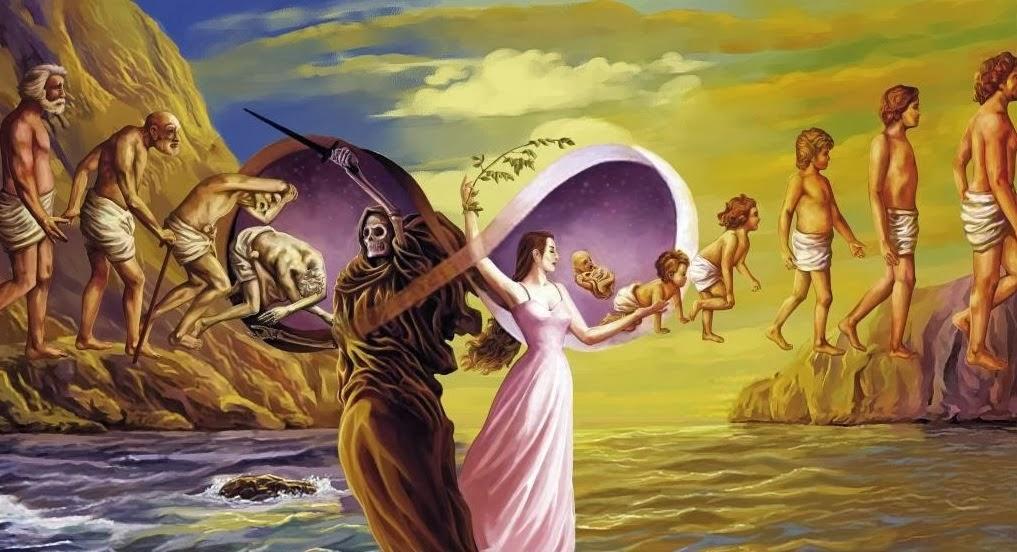
Freedom from rebirth is called “Moksha” in Sanskrit. To achieve freedom means we move upward on the path, by balancing your earthly duties with our ultimate goal of Moksha or spiritual freedom. “Moksha” is a reward for your earthly lessons being finished. You merge into the Divine realm in joy and spiritual union, ending your cycle of death and rebirth. Lifetime after lifetime we repeat a cycle of life and death (Samsara), and on the way we experience many lessons. The reward for a pure mind and balanced life is to achieve Moksha.
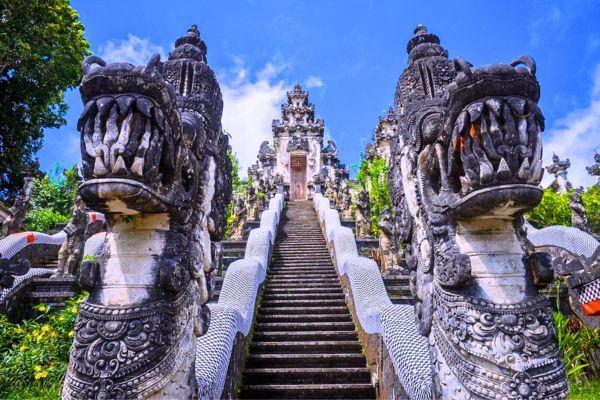
The ascending path is sometimes seen as a stairway leading upward toward Godly realms, like this stairway to Temple Pura Lempuyang (gateway to heaven) in Bali.

The Seven Heavenly Realms (Lokas)
Hindu tradition holds that “Heaven” seven realms consist of 3 God realms, 2 Heavenly realms, and 2 mental realms (see illustration below). The universe is designed so that every experience will assist your personal ascension.
The Heavenly Realms from Highest to Lowest:
- Divine Realm, Home of the Creator, Incomprehensible, Beyond thoughts, Highest frequency vibration (Satya Loka)
- Infinite Consciousness, Bridge to the creator (Tapa)
- Infinite Joy and Knowledge. Can encompass physical and non-physical beings. Can connect through thought (Jana)
- Finite Existence, Galactic Saints live here, Instincts of the Heavens (Mahar)
- Heaven, Unified consciousness, Home of Higher Beings, This is where righteous souls live in paradise before their next physical incarnation. (Svar Loka)
- Spirit world, World of thoughts and concepts, Realm of air connected to physical, It can observe but not act. (Bhuvar)
- Physical Life in 3D. Free will offers a choice to change and ascend to higher levels. You live in a body, learning to balance the senses in order to perceive reality clearly. Every experience is designed to help show you the way to God. (Bhu Loka)

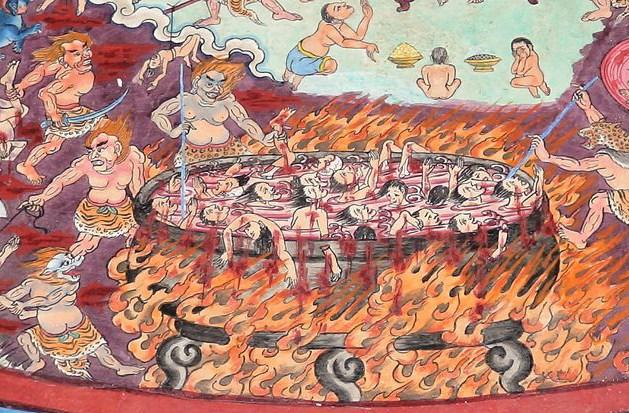
3. The Seven Lower Hell Realms (Lokas)
Hindu Hell is more than just a horned devil cooking you in a pot of oil. Hindu Hell much more interesting, hypnotic, and illusory. Hell happens in the mind. Do you recognize the patterns in our present world?
Highest to Lowest Levels of Hell:
- Infinite imagination, Intense sensory experiences, Passion, Games, Emotional stimulation, Physical Pleasure, Lust, Food, Intense music, Addiction, Lots of money (Atala)
- Selfish Privilege, Enjoy Illusion, Immense Wealth, But Never Satisfied, Empty (Vitala)
- Evil is used for material gain. Right turned to wrong, Rich is God, No Truth, No Spirit (Sutala)
- People are trapped unaware in another’s hallucination or dream, Asleep, May be controlled or insulated in this illusion by evil forces. (Talatala)
- An outwardly peaceful but frightened world of hooded snakes who fear power. You can be abducted by monsters or giant Garuda birds, snatched from your home at any time. This world is filled with spies and imposters, hence no trust. (Mahatala)
- True Hell, Home of devils, Constant war, Infinite death and rebirth into scarcity and fear, No possibility of ascension, Hatred of everyone including God. God is the enemy here. (Rasatala)
- Darkest of worlds, Deadliest snakes, The very richest realm, Vast unlimited wealth, Money, Most mysterious world, Everything is an illusion. (Patala)
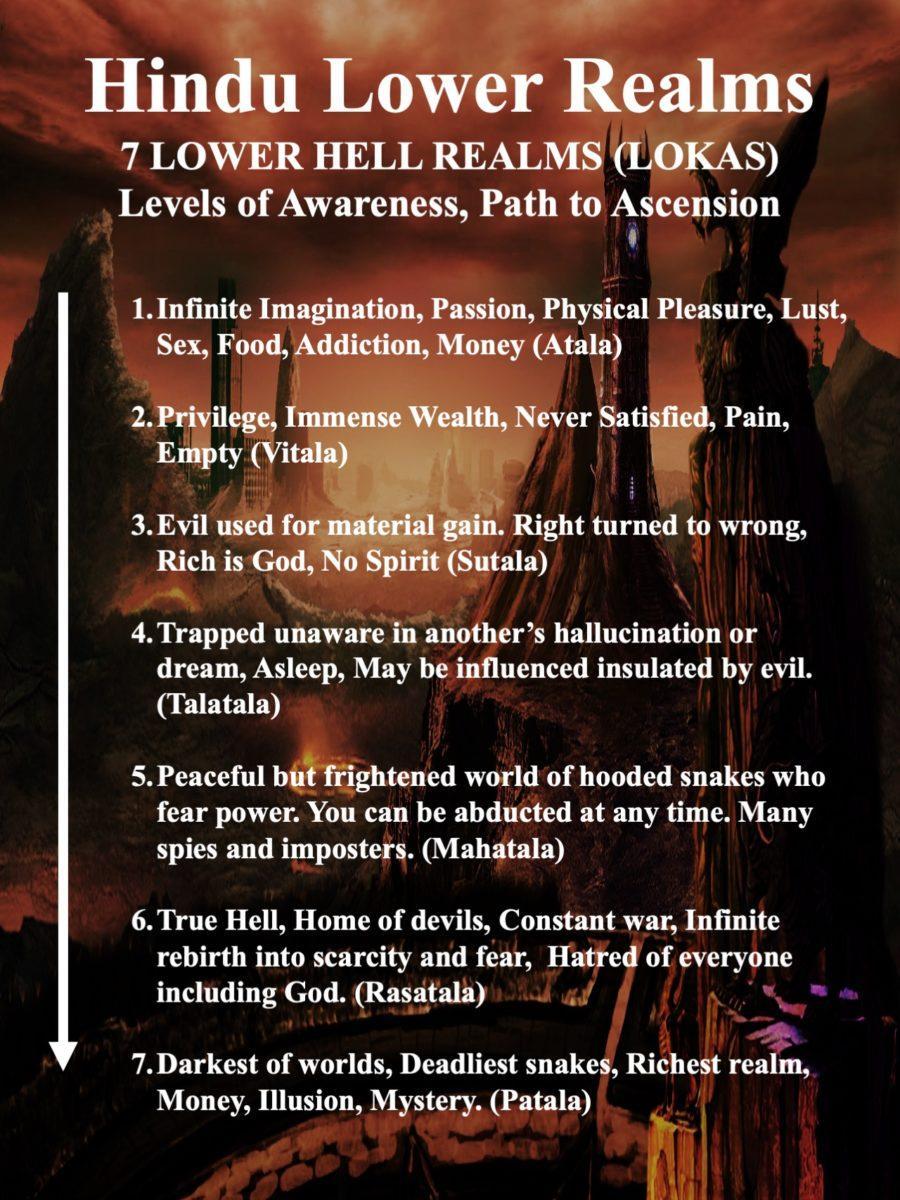
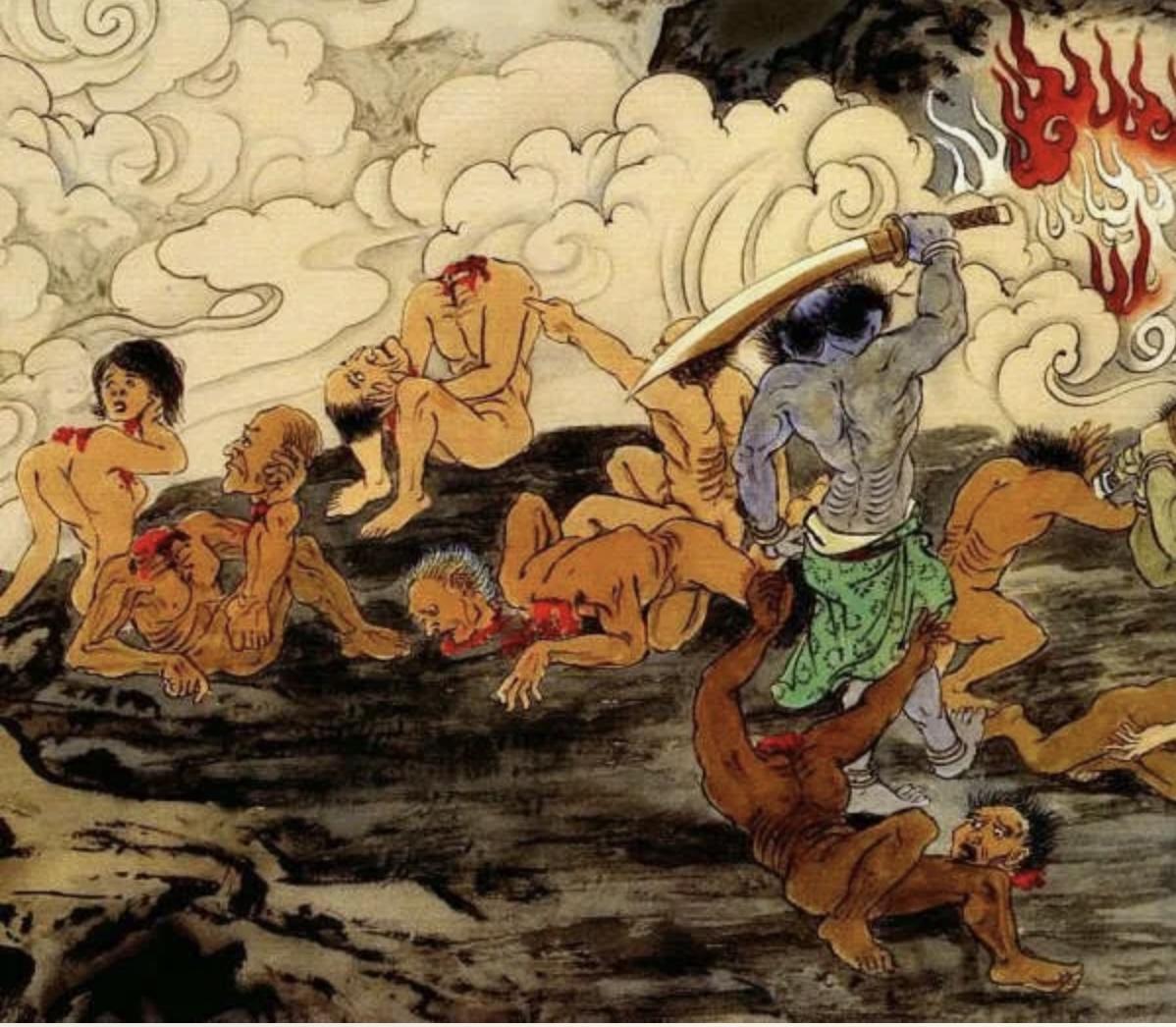 4. Time (Kāla) is Measured Differently in Hindu Astrology, and the World of the Gods.
4. Time (Kāla) is Measured Differently in Hindu Astrology, and the World of the Gods.
Hindu units of time are outlined in ancient Vedic texts starting from microseconds up to trillions of years, according to repeating cycles of cosmic time. Time (kāla) is considered eternal. The oldest known Science of Time is described in Veda texts such as Manusmriti, Bhagavata Purana, Vishnu Purana, Mahabharata, Surya Siddhanta.
Hindu Sidereal Astrology maintains precise alignment between signs and cosmic orbits via corrective Vedic computation known as ayanamsas, which observe the 26,000 Precession of Equinoxes cycle. However, tropical astrology ignores precession. These two systems that were once aligned, after 2,000 years have drifted apart, hence are no longer in harmony. Which system of astrology is correct?
Chapter 8 of the Bhagavad Gita Describes the Structure of the Larger Universe.
According to the Bhagavad Gita, beyond the highest Heaven of Satya Loka exists the world of the Gods, in which time is counted differently and physicality is optional. According to Chapter 8 of the Bhagavad Gita:
“Those who know Brahma’s day which comprises the duration of four billion three hundred and twenty million years and his night also the duration of four billion three hundred and twenty million years are knowers of day and night.”
My interpretation:
One Maha Yuga is called a “Day of Brahma” consisting of 4,320,000 years, within which are contained the four greater Yugas: Satya Yuga, Treta Yuga, Dvarapa Yuga and Kali Yuga.
Following the “Day of Brahma” comes the “Night of Brahma”, which is same length of time – 4,320,000 years. The Day and Night combined equals 8 billion 640 million years. This is known as a KALPA.
360 “Days of Brahma” or 360 KALPAS make up one “Year of Brahma” totaling 26 trillion 438 billion, 400 million years. If we ask: How long does the great God Brahma live? The answer: He lives for a full 100 “Years of Brahma”.
The Kurma Purana states:
“For as long as the life of Brahma is a day for the Supreme Lord and after begins His night. When His night falls everything gets merged back into Him and when His day dawns everything emanates out again and creation begins anew. The Supreme Being resides in the etheric heart of all beings.”
5. PRALAYA, Dissolution of ALL
PRALAYA, the Dissolution of the Universe, In Sanskrit PRALAYA means “dissolution” or “melting away”. This describes a period where the universe ceases to exist, sometimes called “A period of obscuration or universal repose”.
Periodically, Heaven, Earth, and all the lower Hell realms collapse. Even more rarely, the ENTIRE universe collapses, and even the highest realms of God consciousness also dissolve.
No one knows exactly what existed before our Solar System appeared, after the last Maha Pralaya. We know that geological disturbances in the Earth’s axis ended in the upheaval of the oceans of earth and destruction of its primeval races. At some point, there was the disturbance of Atlantis, and another global deluge. In those days, there were “Gods” on Earth. And Mankind as we now know ourselves did not exist.

What is the Puranic Prophecy? Is it Being Fulfilled in Modern Times Before Our Very Eyes?
The four ages or Yugas, always end with the lowest Kali Yuga. Are we in the lowest age? It would seem so, as this devolution also coincides with the decline of Western culture, health, spirituality, and common sense. How prophetic that the ancient text Vishnu Purana predicts the dark influences and sins of this age. For example it is predicted that “barbarians” will be masters of all the lands and rivers.
“There will be contemporary monarchs, reigning over the earth — kings of churlish spirit, violent temper, and ever addicted to falsehood and wickedness. They will inflict death on women, children, and cows; they will seize upon the property of their subjects, and be intent upon the wives of others; they will be of unlimited power, their lives will be short, their desires insatiable. . . . People of various countries intermingling with them, will follow their example; and the barbarians being powerful (in India) in the patronage of the princes, while purer tribes are neglected, the people will perish (or, as the Commentator has it, ‘The Mlechchhas will be in the centre and the Aryas in the end.’)
Wealth and piety will decrease until the world will be wholly depraved. Property alone will confer rank; wealth will be the only source of devotion; passion will be the sole bond of union between the sexes; falsehood will be the only means of success in litigation; and women will be objects merely of sensual gratification. . . . . . External types will be the only distinction of the several orders of life; . . . . . a man if rich will be reputed pure; dishonesty (anyaya) will be the universal means of subsistence, weakness the cause of dependence, menace and presumption will be substituted for learning; liberality will be devotion; mutual assent, marriage; fine clothes, dignity. He who is the strongest will reign; the people, unable to bear the heavy burthen, Khara bhara (the load of taxes) will take refuge among the valleys…
Thus, in the Kali age will decay constantly proceed, until the human race approaches its annihilation (pralaya) . . . . When the close of the Kali age shall be nigh, a portion of that divine being which exists, of its own spiritual nature . . . shall descend on Earth . . . (Kalki Avatar) endowed with the eight superhuman faculties. .
. . He will re-establish righteousness on earth, and the minds of those who live at the end of Kali Yuga shall be awakened and become as pellucid as crystal. The men who are thus changed . . . shall be the seeds of human beings, and shall give birth to a race who shall follow the laws of the Krita age, the age of purity. As it is said, ‘When the sun and moon and the lunar asterism Tishya and the planet Jupiter are in one mansion, the Krita (or Satya) age shall return.’ “ (Vayu Purana, Vol. III, p. 197).
In conclusion, time is infinite. The soul is eternal. Time never began and never ended. There never was a first Kalpa, nor will there ever be a last one. We live in Eternity. A Pralaya, or period of universal repose sounds intriguing and somewhat refreshing. I look forward to seeing you soon somewhere in eternal time and space. Always remember:
“The Supreme Being resides in the etheric heart of all beings.”
Thanks for reading. This article is part of my 20-video series on the Bhagavad Gita, an amazing journey that clearly outlines the path to Enlightenment. Click to view: “Truth Amid Chaos”.
Resources:
- https://www.hinduwebsite.com/divinelife/theosophy/daysnights.asp
- https://bhagavad-gita.org/Gita/verse-08-17.html
- https://en.wikipedia.org/wiki/Hindu_units_of_time
